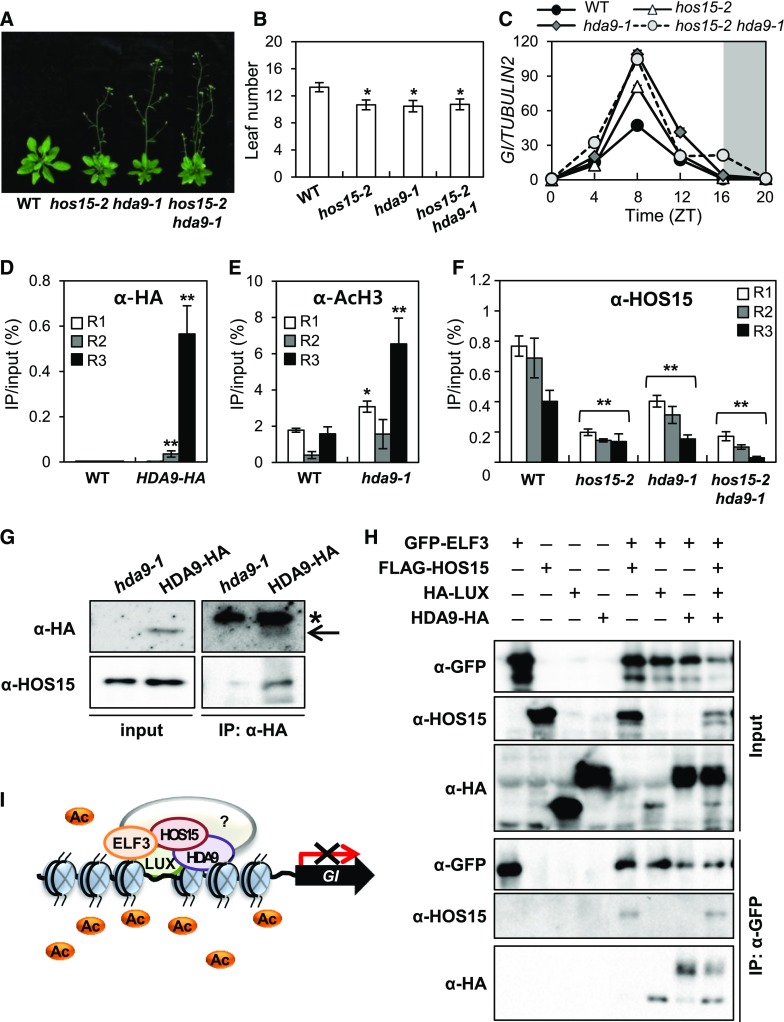Figure 6.
HOS15 Regulates Histone Modification with HDA9 in the GI-Mediated Photoperiodic Flowering Pathway.
(A) and (B) The hda9-1 mutant exhibits early flowering in LD. The numbers of rosette and cauline leaves were counted at bolting as an indicator of flowering time (B). Data are presented as means ± sd (n > 15). Asterisks indicate significantly different values from the wild type (*0.01 < p-value ≤ 0.05; Student’s t test).
(C) GI transcript levels increase in hos15, hda9, and hos15 hda9 mutants. Transcript levels of GI were determined in 10-d-old plants grown under LD by RT-qPCR and normalized to TUBULIN2. Bars = means ± sd from two biological replicates, each with three technical replicates.
(D) to (F) ChIP analysis of 2-week-old plants. Samples were harvested at ZT8 (D) and (E) or ZT12 (F). Genomic DNA was immunoprecipitated by α-HA (D), α- AcH3 (E), or α-HOS15 (F) antibodies, respectively. Specific regions of the GI promoter were amplified by qPCR. Results were normalized to the input DNA (n = 3), and values represent means ± sd from three biological replicates, each with three technical replicates. Asterisks indicate significantly different values from the wild type (*0.01 < p-value ≤ 0.05; **p-value < 0.01; Student’s t test).
(G) HOS15 interacts with HDA9. The total proteins extracted from proHDA9:HDA9-HA transgenic plants were immunoprecipitated with α-HA antibody and resolved by SDS-PAGE. The immunoblots were probed with α-HOS15 and α-HA, respectively. The input protein was extracted in urea/SDS buffer. *Nonspecific bands.
(H) HOS15 and HDA9 form a complex with the EC. N. benthamiana plants were infiltrated with Agrobacterium harboring 35S:GFP-ELF3, 35S:FLAG-HOS15, 35S:HA-LUX, and 35S:HDA9-HA for transient expression. The proteins were immunoprecipitated with α-GFP antibody and resolved by SDS-PAGE. The immunoblots were probed with α-HA to detect LUX (bottom band) and HDA9 (top band), α-HOS15, and α-GFP to detect ELF3.
(I) Model of the role of HOS15 in the photoperiodic flowering pathway. A histone deacetylase complex composed of HOS15, HDA9, and EC components binds to the GI promoter through LUX, and the level of acetylated H3 at the GI locus is reduced, thereby repressing its transcription.

